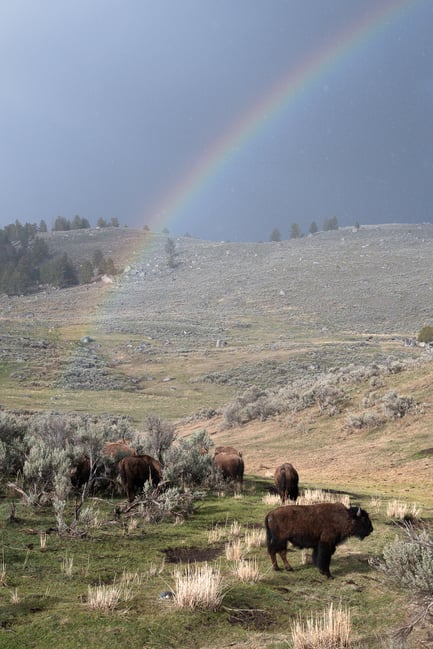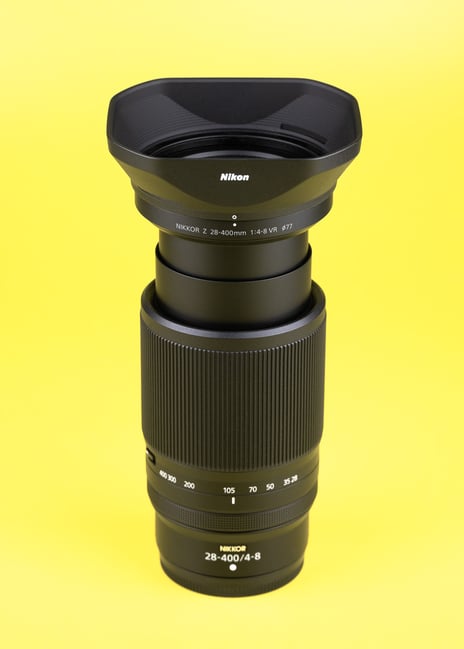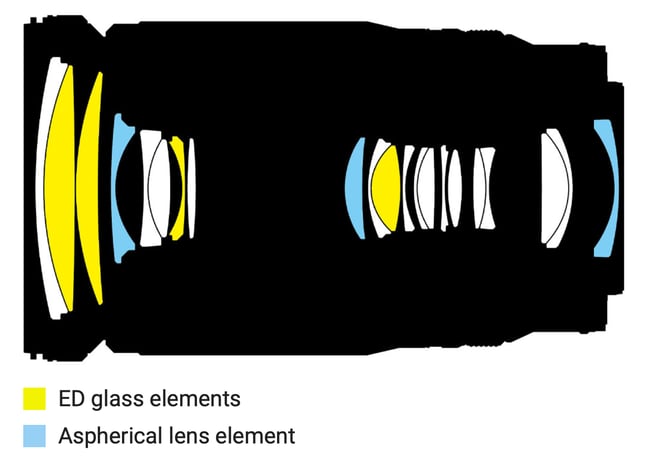Introduction
Superzooms have always been viewed with a certain amount of disdain by “serious” photographers. Fairly or unfairly, lots of photographers would immediately dismiss anything more extreme than a 24-120mm lens. But now, Nikon has released not a superzoom, but a straight hyperzoom, whose wide end starts at 28mm and ends at 400mm: the Nikon Z 28-400mm f/4-8 VR.
How big is the optical compromise in a 14.3x zoom? Is this record-breaking lens just a marketing ploy? To answer these questions, our team has tested the Nikon Z 28-400mm f/4-8 VR extensively both in the field and in the lab. Today’s review will tell you everything you need to know about this lens and whether it’s worth buying for yourself.

I have to admit that I’m one of those photographers who is a little wary of superzooms. Where image quality is concerned, they often have weaker sharpness, more flare, busier bokeh, and worse distortion than alternative lenses. Other issues include their narrow maximum apertures and their (generally) cheaper build quality. Superzooms just have too many compromises to make the many focal lengths feel like a good deal.
That impression changed back when I tested the Nikon Z 24-200mm f/4-6.3 VR a few years ago. It’s still far from a perfect lens, but it was good enough to convince me to buy a copy after finishing my review. For travel photography or filming quick videos, the image quality is plenty good, and I’ve used that lens a lot in the years since. Even so, the Nikon Z 24-200mm f/4-6.3 VR is still not my preferred choice whenever I have time to carry something more specialized.
Would the Nikon Z 28-400mm f/4-8 VR be an improvement? Frankly, I was skeptical. Generally speaking, the longer the superzoom, the lower the image quality. The 24-200mm f/4-6.3 was already starting to leave my comfort zone in that regard.
But after testing the Nikon Z 28-400mm f/4-8 VR, I came away pleasantly surprised. As you’ll see throughout this review, it (unsurprisingly) doesn’t set any performance records, but it’s better than I expected. That goes not just for sharpness, but also things like flare, vignetting, build quality, and portability. Even at 400mm, it’s completely usable.
Read on to see our full review of the Nikon Z 28-400mm f/4-8 VR and learn whether its strengths and weaknesses are right for you.


Build Quality
For a standard zoom, this is one of the bigger options in Nikon’s lineup. It weighs 725 grams (1.6 pounds) and measures 14cm long (5.6 inches). Of course, no one expects a pancake form factor from a 14.3x superzoom. Given the number of lenses that it could replace in your bag, I’m willing to cut it some slack.
Like all superzooms that I know of, the Nikon Z 28-400mm f/4-8 extends as you zoom in. At 400mm, it’s about 25 cm long (9.8 inches). To prevent unintentional extension during transport, the lens can be locked at 28mm.

I was impressed to find that the barrel was assembled with such tight tolerances. Even when the dual telescoping barrel was all the way extended, there was hardly any wobble at all – unusual in an external zoom in general, let alone one that extends this much. This helps keep the barrel grit-free even if you spend a lot of time taking pictures in dusty and sandy conditions.
And indeed, our team tested two copies of the lens in harsh conditions, including rain, snow, and sand. The lens handled it without issue, and no sand or grit became stuck in the barrel during our time with the lens. This definitely adds to its usefulness as a travel-everywhere kind of optic.

The Nikon Z 28-400mm f/4-8 has a standard 77mm filter thread on the front. What isn’t standard is the shape of the lens hood. Nikon chose a fairly wide rectangle that is going to be most effective at 28mm, but still better than a circular shape at the longer focal lengths.

As for materials, the lens has a plastic barrel and a metal mount, both typical of today’s Nikon Z lenses (though there are a few exceptions). It didn’t feel any lower in quality than the plastic barrel of some more expensive or higher-end Nikon Z glass, including some of their S-line lenses. For a superzoom, that’s enough for me.
Now let’s cover the handling features of the Nikon Z 28-400mm f/4-8 VR.
Handling
The Nikon Z 28-400mm f/4-8 VR is a very sparse lens with few handling features of note. It has the usual zoom and focusing rings, but no additional control ring. The lens lacks a manual/autofocus switch, let alone things like a distance limiter or custom function buttons. In fact, the only switch on the entire lens is to lock the focal length at 28mm while you travel.

Although the lens does have vibration reduction, there is no physical VR switch on the lens itself (just like all other Nikon Z lenses). It needs to be accessed via the menu instead. The good news is that I found the vibration reduction on this lens to work quite well in combination with in-body image stabilization – almost all the images in this review were taken handheld, and despite shutter speeds down to 1/25 second, they all turned out sharp at a pixel level.
With Nikon’s Synchro VR cameras (including the Nikon Zf, Z8, and Z9), the Nikon Z 28-400mm f/4-8 gains half a stop of vibration reduction performance (from 5 stops to 5.5 rated by CIPA). The VR system also works with cameras that lack in-body image stabilization – although, for Nikon Z DX cameras, I would first consider the Z 18-140mm f/3.5-6.3 VR or even the Z 24-200mm f/4-6.3 VR due to weight concerns.
Overall, I wish that Nikon had given this lens more attention in the handling department. Apart from vibration reduction, there are no real handling features worth mentioning. At a minimum, a manual/autofocus switch would have been useful. But this minimalist design is hardly out of character for Nikon’s non-S lenses.

Maximum Aperture
One of the biggest concerns with the Nikon Z 28-400mm f/4-8 VR isn’t even the image quality – it’s the fact that the maximum aperture is so narrow. Granted, mirrorless lenses in general are able to focus with narrower maximum apertures better than DSLRs, but f/8 is still very dim.
What’s worse is that the f/4-8 maximum aperture on this lens isn’t a gradual scale. It’s only f/4 for a brief moment before diving swiftly to f/5.6 by 50mm. It becomes f/8 as soon as you reach 200mm, and it stays there until the end. The detailed progression (in 1/3 stops) is below:
- 28mm: f/4
- 35mm: f/4.5
- 42mm: f/5
- 50mm: f/5.6
- 85mm: f/6.3
- 135mm: f/7.1
- 200mm+: f/8
This definitely hampers the lens’s value as a travel photography option. Unless you bring a tripod with you, f/8 at 200mm+ will quickly start to demand some high ISO values. I found that it worked fine in bright daylight, but as soon as sunset grew near, I had to bump the ISO uncomfortably high. Even the Nikon Z 24-200mm f/4-6.3 is better in this regard.
Still, today’s cameras (and particularly software options) are so good at dealing with high ISO noise that it may not matter to you so much. I’m definitely willing to shoot at, say, ISO 6400 much more than I used to be. Just keep in mind that this is one of the various image quality compromises with this lens.

Focal Length
Because of the wide range of focal lengths of the Nikon Z 28-400mm f/4-8 VR, it has some promise for everything from landscape photography to wildlife photography (at least in good light). Take a look at the following example photo, captured at 28mm. Overlayed is a red rectangle showing the area that you’ll capture at 400mm in the same scene:


That is quite a lot of reach, especially for such a small lens! 400mm lenses usually weigh a lot more and take up much more space. The difference between the 28mm and 400mm focal lengths is really, really huge.
Here’s another example:


Being able to achieve this in a single lens is almost unprecedented. In fact, upon its release, the Nikon Z 28-400mm f/4-8 VR set the record for the longest zoom range available in a full-frame lens. The only way to beat it is to go with a smaller sensor camera, or a dedicated point-and-shoot superzoom like the over-the-top Nikon P1000.
And that’s probably why you’d be buying the Nikon Z 28-400mm f/4-8 VR in the first place. There are cheaper lenses, brighter lenses, and lenses with better image quality. But for now, there are no lenses with such a magnificent zoom range available for full-frame cameras. You’ll see throughout this review that I frequently used 28mm, 400mm, and everything in between – it was a blast to have all that flexibility in a single lens!

Competition
Before I get to our lab tests, let’s take a quick look at the alternatives to this lens. Among Nikon’s full-frame lenses, the 28-300mm f/3.5-5.6G ED VR for F-mount held the record until now. There is also the Nikon Z 24-200mm f/4-6.3 VR. These two lenses aren’t perfect, however. The 28-300mm’s image quality is pretty iffy, and the 24-200mm – though an improvement – is still one of the weaker Nikon Z lenses optically. However, both of these lenses are brighter than the new 28-400mm f/4-8.
What about the competition from other brands? Some recent full-frame examples include the Canon RF 24-240mm f/4-6.3 IS USM, Sony FE 24-240mm f/3.5-6.3 OSS, Tamron 28-200mm f/2.8-5.6 Di III RXD and, most recently, the Panasonic Lumix S 28-200mm f/4-7.1 MACRO O.I.S. However, none of them even reaches 300mm, let alone 400mm. The Nikon Z 28-400mm f/4-8 really is unique among superzooms today.

Nikon Z 28-400mm f/4-8 VR Specifications
- Full Name: Nikon NIKKOR Z 28-400mm f/4-8 VR
- Mount Type: Nikon Z Mount
- Focal Length: 28mm to 400mm zoom (14.3× zoom)
- Angle of View (DX): 53° to 4°
- Angle of View (FX): 75° to 6°10′
- Maximum Aperture: f/4 at 28mm; f/8 at 400mm
- Minimum Aperture: f/22 at 28mm; f/45 at 400mm
- Aperture Blades: 9
- Filter Size: 77mm
- Lens Elements: 21
- Lens Groups: 15
- Special Elements: 3 aspherical, 4 ED glass
- Special Coatings: Either none, or not yet announced
- Electronic Diaphragm: Yes
- Vibration Reduction: Yes
- Internal Zooming: No
- Internal Focusing: Yes
- Control Rings: Zoom and focus
- Function Button: No
- Focus Motor: STM
- Minimum Focus Distance: 0.2 meters (8 inches) at 28mm; 1.2 meters (3.9 feet) at 400mm
- Maximum Magnification: 0.35× at 28mm (1:2.9)
- Mount Material: Metal
- Weather/Dust Sealing: Yes
- Dimensions (Length × Diameter): 142 × 85 mm (5.6 × 3.4 inches)
- Weight: 725 grams (1.60 lbs)
- MSRP: $1299.95 (see current price)
Here is the construction of the lens, courtesy of Nikon:
 The next page of this review covers the optical characteristics of the Nikon Z 28-400mm f/4-8 VR, including focusing performance and sharpness tests in the lab. So, click the menu below to go to “Optical Performance”:
The next page of this review covers the optical characteristics of the Nikon Z 28-400mm f/4-8 VR, including focusing performance and sharpness tests in the lab. So, click the menu below to go to “Optical Performance”: